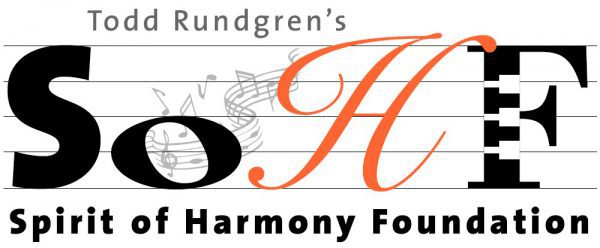
COVID-19 taught us all that pandemics and other emergencies can and do happen. We can take the lessons we have learned as a way to prepare for whatever the future holds, whether it’s illness, natural disaster, or any other situation that disrupts our ability to conduct music lessons in traditional ways.
The Spirit of Harmony advocates for music education for children. Even in times of program interruption, it is always our hope to offer practical assistance and worthwhile ideas to music programs dealing with the challenges of shelter-at-home orders and extended periods of school or program closure.
NAMM Foundation (National Association of Music Manufacturers) has posted several helpful webinars on video, discussing every aspect of music education during the COVID-19 pandemic. Please click here. Take the time to watch these videos, as they cover a wide range of situations and ideas. We strongly encourage you to sign up for future NAMM webinars as they are scheduled. The webinars are free and they are excellent.
Remote and Virtual Lessons
Many instructors are utilizing Facetime, to conduct one-on-one lessons with students. Other options are the Google G Suite (Google Classroom, Google Forms, Google Docs, Google Meet, Gmail, etc) and Microsoft Teams. ZOOM is also very useful for one-on-one lessons or very small groups (larger groups are difficult because of sync issues – see below).
Structured lessons are available through some of the music book publishers. Please consider these powerful, innovative, and low-cost resources and how they can make high quality remote music education possible:
Alfred Music: Online use of music books
Music Educators Toolbox: Carnegie Hall
For virtual music lessons, numerous resources exist, including platforms like GuitarZoom and ArtistWorks, which offer structured lessons with various instruments. Additionally, platforms like Solfeg.io and MusicplayOnline provide free interactive tools and games for music education. Websites like 8notes.com offer free sheet music.
Group Performances
ZOOM: Zoom is a great platform for getting large (up to 100!) groups together online. In all honesty, its usefulness for simultaneous playing/singing is very limited because of sync issues, so it would be most useful for demonstrations with one person playing at a time. If you don’t mind auditory chaos, however, it is a good way for teachers and students to see each other and to interact together, and it can be fun and easy to use. Zoom is free to use for sessions under 40 minutes. We recommend you give it a try and if you find the 40 minute limit a hindrance to your program and the fees are an obstacle for you, please contact us and we will discuss options with you.
Here is a webinar called “An Educator’s Guide to Teaching Over Zoom,” which is for general teaching, and not specifically for music. Please click here.
Here is a helpful video that provides basic instructions on using Zoom:
Some great tips here.
Some Post-COVID Reference Material
RETURN TO MUSIC Guidance and Resources, August 2021: What does music look like as we move into 2021-2022? The Return to Music Project wants to make the lives of music educators easier moving forward as we advocate for our programs, plan for the upcoming school year, and try to keep the music alive in our schools across the nation.
Plan for the Future
Music is part of a “well rounded education” defined by federal law. This doesn’t mandate music in any school, but it helps provide additional legitimacy to the academic nature of music education.
Here are some things to consider in planning for any future interruptions in your ability to conduct music education programs:
- Many schools/programs were not able to get the children’s instruments out of the building before things shut down. How can you make it possible for kids to have their instruments at home during a shut-down? (One music program mentioned that the children travel by bus and the bus company would not let them bring instruments on the bus because of space issues. In such a case, it might be necessary to convince the school administration to work out an agreement with the bus company, even if it means they must make multiple trips.)
- Get actual data regarding kids who have access to the internet and have the devices they need to connect them to remote learning platforms when needed. What would it take to make sure all of the students you teach have a device and internet access (provide an actual cost/resource estimate)?
- Consider collecting recordings of students’ public performances and compiling all of them on a YouTube channel, so kids and their families can remain connected and engaged. Before doing so, check with your school/organization’s policies about including the faces of children in public videos.
- Prepare written exercises that are music- related to keep children engaged in music, regardless of their access to instruments or connectivity. One excellent idea is to instruct students to find an example of a musician playing “their” instrument and what they especially like about it and why (video, televised performance, or any recording.)
- When school reconvenes, no one can predict the budgetary situation. It is unfortunately very possible that music programs will experience cuts. PLEASE take some time to read our Music Education Advocacy Toolkit (to the right on this page) to get articles and links about the importance of music education for children. You will also find an abundance of resources and ideas. Make sure that your Plan is very specific about the vital importance of continuing your program(s)!
- As in-person music programs at schools give way to virtual and online music programs, we now have an opportunity to advocate for music programs being offered as part of the regular curriculum, just as virtual and online math and history programs are offered by schools.
Program Spotlight Archive
Please click here for previous features.
